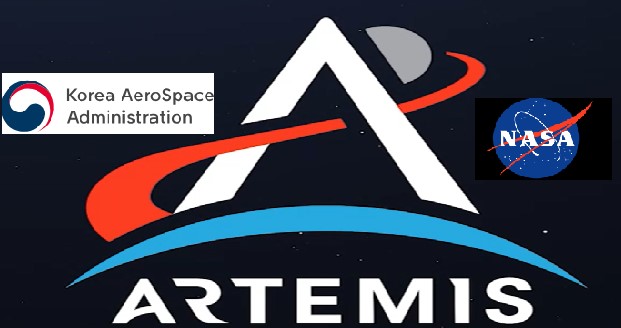
(Photo : Nasa, Kasa Official websites)
- South Korea's KASA has partnered with NASA for the Moon exploration Artemis programme.
- The collaboration will involve studies on lunar exploration aspects, including lunar landers, space communications, and space-based life sciences.
- In addition to Artemis, the two agencies plan to send a jointly developed solar coronagraph to the International Space Station.
- This partnership signifies the growing international cooperation in space exploration and research, crucial for advancing our understanding of the universe.
South Korea's national space agency, the Korea AeroSpace Administration (KASA), has announced a significant collaboration with the US National Aeronautics and Space Administration (NASA). This partnership is centered around conducting studies related to the Moon exploration Artemis programme. This development marks South Korea as the fifth nation to sign such an agreement with NASA, a significant milestone in the global space race.
The Artemis programme, spearheaded by NASA, is focused on sustainable exploration of the Moon and preparations for Mars exploration. The collaboration between KASA and NASA will involve conducting feasibility studies on various aspects of lunar exploration. These include lunar landers, space communications, positioning, navigation and timing, tools and applications to support astronauts, and space-based life sciences and medical operations.
The projects will also delve into lunar surface science and autonomous power, robotics and mobility systems. Activities in the cis-lunar space, the region of space between the Earth and the Moon, are also part of the agreement. South Korea is one of the 47 countries that have signed the Artemis Accords, a US-led international agreement for lunar exploration.
Expanding Cooperation in Space and Aerospace Research
In September, KASA signed a joint statement with NASA for cooperation in various areas involving space and aerospace research. The two agencies also signed a separate agreement to jointly design a mission concept for operations at the so-called Lagrange point L4, where the gravitational forces of the sun and Earth are balanced.
In addition to the Artemis programme, South Korea and the US also plan to send a jointly developed solar coronagraph to the International Space Station (ISS). This instrument will gather information on the sun's outer atmosphere, or corona, and solar wind. The Coronal Diagnostic Experiment (CODEX), a 20 billion-won ($14.5 million) collaboration between the Korea Astronomy and Space Science Institute and NASA, is the world's first coronagraph designed to observe the temperature and velocity of the solar wind in addition to the density.
KASA noted that CODEX will help researchers better understand the solar wind and predict space weather. This collaboration is part of South Korea's broader ambition to join the elite ranks in the global space race. The country's current homegrown space rocket, Nuri, has a shipping cost of $24,000 per kilogram, while SpaceX offers transport for around $2,000 to $3,000 per kilogram.
The Impact of the Collaboration
Despite these challenges, South Korea is determined to develop a competitive space transportation system and a forward-looking exploration strategy. The collaboration between KASA and NASA is not only a significant step for South Korea but also for the global space community. It signifies the growing international cooperation in space exploration and research, which is crucial for advancing our understanding of the universe.
The partnership also highlights the importance of sustainable exploration, which is key to ensuring the long-term viability of space missions and the preservation of celestial bodies for future generations. As we look to the future, such collaborations will be crucial in pushing the boundaries of human knowledge and paving the way for the next generation of space explorers.
* This is a contributed article and this content does not necessarily represent the views of btin.co.in









